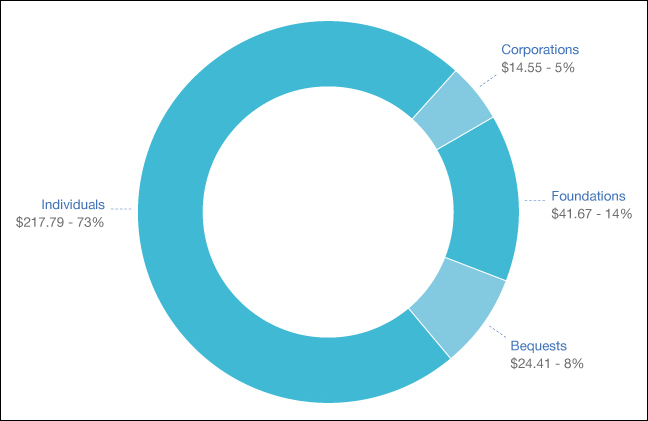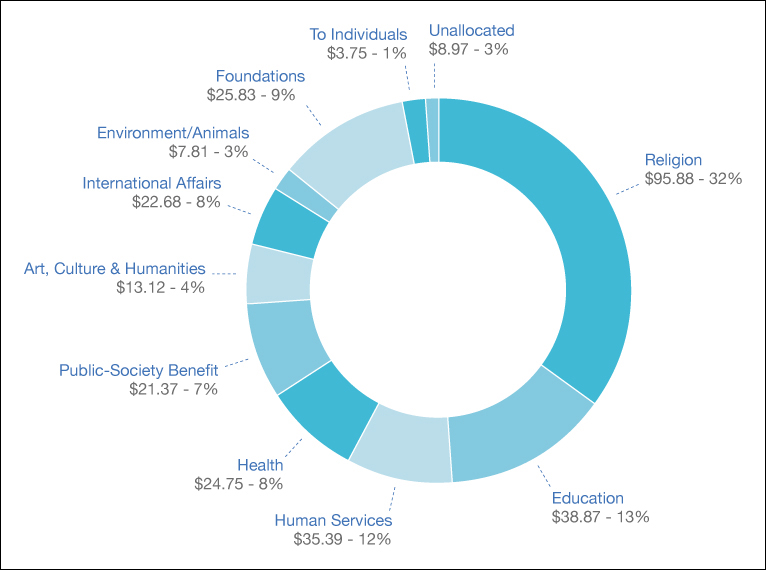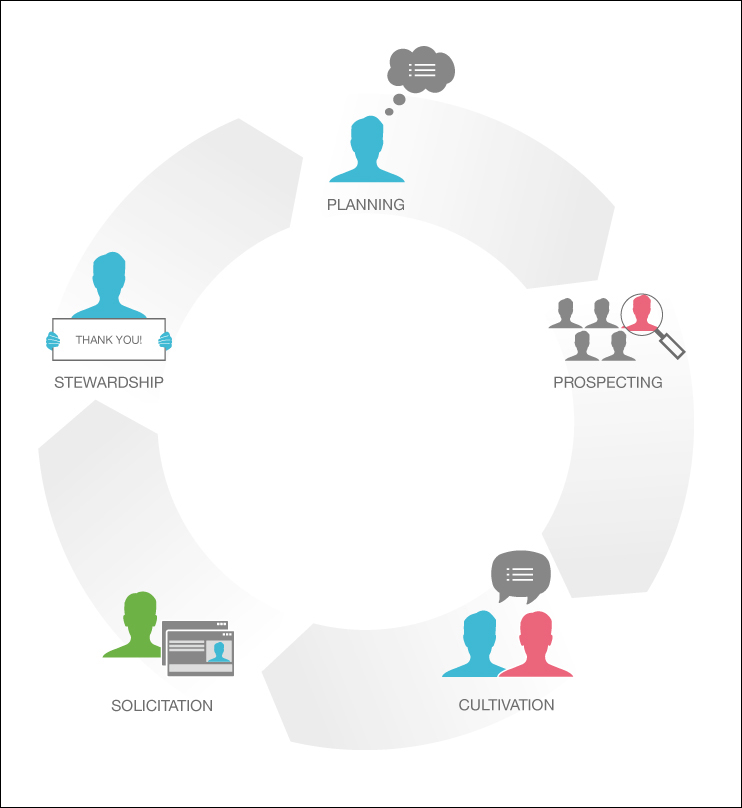1. Why Online Fundraising?
Are you ready to dip your toe into the online fundraising waters? Are you eager to get going, but concerned that you may be in over your head?
Don’t fret—you’ve come to the right place. We’re going to share some simple, effective, and proven ways for beginners to collect money via the Web for good causes.
The first thing we’ll do in Chapter 1 is go over some basic principles and processes to give you an overview of the fundraising landscape.
Online Fundraising Defined
Let’s take a moment to clarify the term “online fundraising,” because it’s probably broader than you think.
When you envision online fundraising, you may imagine donors sitting comfortably at their desktop computers and donating through the websites of their favorite charities. And they very well may be.
But it’s just as likely that they’re connecting to their causes while lolling on the sofa with their iPads, or multitasking with their smartphones or any number of mobile devices.
For simplicity, we’ll use “online fundraising” as a catchall that covers raising money through websites, email, social media, or texts, regardless of the type of device used.
Who Do We Think You Are?
We welcome all the readers we can help, of course, but this book will be most useful to those who are new to online fundraising, many of whom are probably new(ish) to offline fundraising, as well.
You’re likely to fit into one of these categories:
• Leaders of very small nonprofits, perhaps made up of just yourself and a handful of board members. Paid staff? Probably not yet.
We figure your budget is tight, so you’ll probably want to start with the simplest online solutions, and do more as your organization grows.
For example, you might just want to be able to accept online donations from your website right now, and then add an email newsletter in your next phase.
• People raising money for existing nonprofits—charities, schools, churches, and the like. PTAs, kids’ sports teams, and church youth groups fall into this category.
• People raising money for a nonprofit that’s not a charity. Sounds like a trick question, doesn’t it? But there are plenty of these organizations—professional associations, labor unions, and veterans’ groups, to name a few. The strategies outlined in this book apply to these groups, too.
• People raising money for family, friends, neighbors, or even themselves. There’s no nonprofit status involved here, just electronic passing of the hat for someone who needs help, or wants a honeymoon fund, or any number of scenarios.
Fundraising Facts
Traditional offline fundraising takes seemingly countless forms, from humble door-to-door soliciting for a few dollars to swanky charity dinners for $500 a plate.
Online fundraising raises the bar by giving you 24/7 global reach to champion your cause and request money. Each approach offers variations on the same pitch: asking people to give funds to benefit something other than themselves.
Even in tough economic times, people often respond to these requests with open wallets. While corporate and foundation grants provide significant funding for some nonprofit organizations, the vast majority comes from just plain folks giving to causes they believe in. In 2011, individuals donated 73 percent of the $298.4 billion given to nonprofits in the U.S. (Figure 1.1). Further, about 65 percent of American households gave to at least one nonprofit organization during the year.
Figure 1.1. Individuals gave almost $218 billion to nonprofits in 2011, more than the other major sources combined.
Source: Giving USA Foundation
Who did all that money go to? Of the roughly $218 billion that individuals donated to nonprofits in 2011, fully 32 percent went to religious organizations, followed by educational institutions with 13 percent, and human services groups with 12 percent (Figure 1.2).
Figure 1.2. Religious organizations topped all group recipients in 2011.
Source: Giving USA Foundation
These statistics may help you appreciate the scope of fundraising at a high level. But what do they mean for your cause? Who will your donors be, and how should you appeal to them?
Read on: Our upcoming chapters will address the issues you’re likely to encounter and offer some strategies for online fundraising success.
Types of Online Fundraising
Our book’s focus is on fundraising by very small nonprofits and individuals. Think of it as the do-it-yourself approach, as opposed to the sophisticated fundraising operations of established nonprofits and very large charities such as the Red Cross or the World Food Program.
While nonprofits of any size share the same goal of raising money for their programs and operations, small organizations and individual fundraisers face a different set of challenges.
Unlike established nonprofits, many up-and-comers simply don’t know how to begin the process of online fundraising: how to set up a website, how to appeal to donors, how to collect and distribute funds, how to track contacts, and so on.
We’ll help with these concerns and more, keeping in mind that you’re probably tight on both money and staffing.
Who’s Who in Online Fundraising
Let’s take a moment here to look at who participates in online fundraising (Figure 1.3). The Asker and Giver roles are obvious, but they’re not the only participants involved, especially when you take into account the many resources that can make those roles easier:
• Fundraiser: The person or organization requesting a donation.
• Donor: The person being asked.
• Beneficiary: The person who ends up with the money. It could be your friend who has cancer, a charity, a political candidate, a school, a church, a neighborhood group, a fraternal club, or any individual or organization.
• Enablers: The entire industry of experts, researchers, technology providers, and others who can help you raise funds.
Figure 1.3. There are at least four main roles—and many variations—that people can play in the online fundraising process—and you need to know each of them well to succeed.
You’ll get to know these participants in this book and in your online interactions. Many will introduce themselves to you at the most opportune times in your fundraising efforts. Some may even be you as your online fundraising experiences, ambitions, abilities, and achievements grow.
The Online Fundraising Cycle
Individual fundraisers and many small nonprofit organizations typically don’t need overly complicated documents outlining their fundraising purposes and strategy (unless they’re required for legal reasons), but familiarizing yourself with the online fundraising cycle (Figure 1.4) will help guide your actions.
Figure 1.4. The online fundraising cycle involves Internet synergy that helps keep donations moving in your direction.
There are always some variations to suit specific causes, of course, but the following five steps offer surefire procedures for most of your basic online fundraising needs.
Planning
Online fundraising allows you to be fast and flexible, but you still need a thorough, well-thought-out plan. Begin by asking yourself the following questions: How much money do I need? How will I use it? Where will I get it? What steps will that entail for me? See Chapter 5 for a sample case statement.
When your plan takes shape, remember to view it from the online donors’ perspective as well: imagine explaining your fundraising needs to them and making a pitch about why your cause deserves their support. Always be clear, concise, and motivating about your needs, online or off.
Prospecting
In the early stages of a fundraising campaign, you’ll want to identify potential online donors and learn more about current supporters as well. This could involve Internet research, or scouring Twitter and Facebook for people who are interested in causes like yours.
Most likely, new supporters will find you through already established online relationships, such as your own contacts or friends of your current donors.
We’ll have more to say on this subject in upcoming chapters, about donor behavior (Chapter 3) and social fundraising (Chapter 9).
Cultivation
Communicating with current and prospective donors is part of the careful cultivation you’ll need to do to keep online money coming in for your cause. This can include sending e-newsletters and website updates, tweeting your latest happenings, keeping your Facebook page up to date, sharing real-time and/or podcast presentations, or even hosting online forums.
When you’ve identified prospective donors, keep in touch, provide them with updated information about your cause and its accomplishments, and be sure to thank them for their interest.
Solicitation
Now there’s a word that can make your palms sweat. However laudable a cause, asking for money can be tricky. Luckily, there are a number of smart ways to do it.
Blogs, webpages, emails, social media, and online events can help you ask for donations in broad and sustainable ways.
We’ll share more about the where, why, when, and how of effective online solicitation throughout this book (especially in Chapter 3, where we explain key aspects of online donor behavior).
Stewardship
This step in the cycle involves effectively managing your relationship with donors. Managing money responsibly builds the trust you need to turn one-time donors into repeat donors. As your relationship deepens, your supporters are more likely to tell others about your good works and help grow your base.
Another huge part of stewardship is making sure your supporters know how much you appreciate them. Inattentive fundraisers eventually find that some donors stop giving because they don’t feel adequately thanked. Savvy fundraisers know how to treat donors as well as their donations.
Helping Hand
With this overview, we trust that you have a general sense of online fundraising and are ready for more insights and applications.
Here are some points to remember as you read on:
• Online fundraising refers to raising money on your website or mobile app or other digital media (that is, finding money for your cause on whatever platforms serve you best).
• Individuals raise billions of dollars a year for nonprofits such as churches, schools, and charities.
• You don’t have to be a nonprofit to accept donations. Individuals can readily raise money for causes that support sick friends or relatives, pay unexpected bills, or serve other urgent needs.
In Chapter 2, we’ll look at specific online fundraising techniques and share some quick ways to get set up and start collecting money for your cause.






